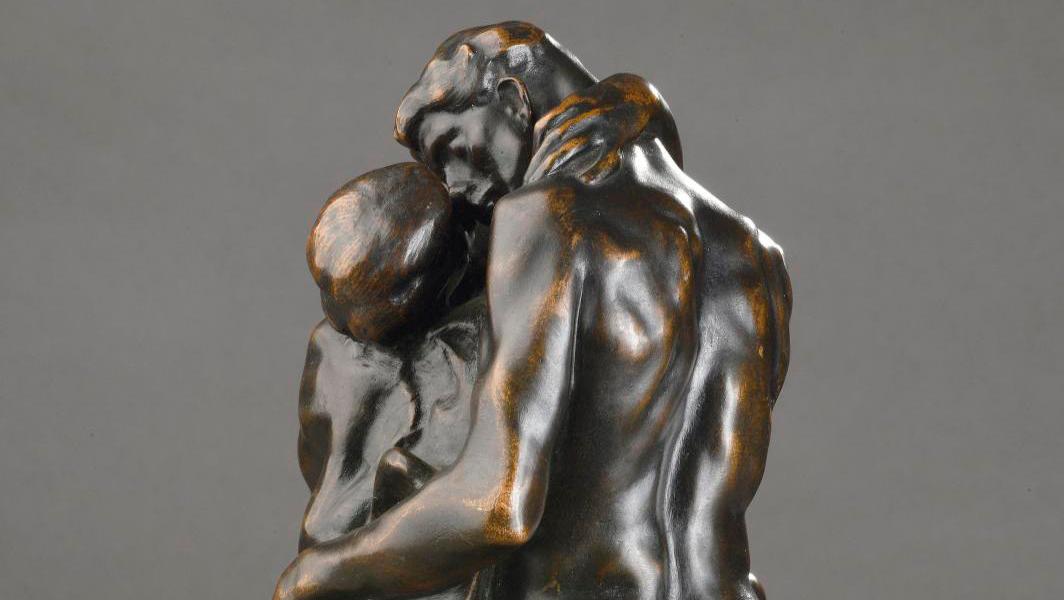This bronze cast by Barbedienne has been in the same collection since the 1960s. We look back at the birth of an icon.

Auguste Rodin (1840-1917), Le Baiser (The Kiss), size No. 2, épreuve en bronze model with brown patina by Barbedienne, between 1899 and 1917, sand casting signed "Rodin", stamp "Réduction Mécanique A Collas", marked "Barbedienne Fondeur Paris", "AA", No. 798, 25.7 x 15.7 x 15.4 cm/10.1 x 6.1 x 6.06 in.
Estimate: €30,000/50,000
If the evocative power of this sculpture leads us to see it today as an allegory of love, we should remember that it was originally surrounded by an aura of death. Placed in the context of the “Inferno” described in Dante's Divine Comedy, it illustrates the last kiss between two condemned lovers, Francesca and Paolo, murdered by a jealous husband as punishment for their embrace. Auguste Rodin, who had modeled this group as early as 1881-1882 for his Porte de l'Enfer (Gates of Hell), eventually changed his mind in view of the couple's passionate rather than tormented impulse. In 1886, Rodin decided to emancipate the couple from high relief and give it a life of its own in the round. Discovering the work at the Georges Petit Gallery in Paris, then at the Brussels Salon the following year, the public immediately agreed with him: transcending the story of the star-crossed lovers by retaining only Le Baiser (The Kiss), he gave the work this new title, for posterity.
As a shrewd entrepreneur, Ferdinand Barbedienne made no mistakes. Noticing the fascination of visitors and the enthusiasm of critics for the marble enlargement commissioned by the State, which took pride of place at the heart of the Paris Salon in 1898, he obtained from the sculptor the exclusive right to produce a metal edition of the work for twenty years. The founder was one of the first to use Achille Collas' mechanical reduction technique, a novelty in the bronze industry at the time. They "will be executed under the supervision of M. Rodin and must be accepted by him", stipulates their agreement. This contract was one of the first signed between a publisher and an artist. Limiting other reproductions by the latter so as not to compete with the foundry, the contract secured the market and ensured the value of the editions. All produced during Rodin's lifetime, production began the following year, thanks to master models made from a plaster proof of the initial 86 cm (33.8 in) sculpture, supplied by the sculptor. After the original 72 cm (28.3 in) model, came the smaller, much sought-after 26 cm (10.2 in) tall model. Given their success, Barbedienne would later add 42 (16.5) and 60 (23.6) cm versions to his catalog.
The growing number of editions—forty-nine for the first size, sixty-nine for the second and over one hundred for the last two— also bears witness to the craze for Le Baiser. Made iconic by Rodin's contemporaries who appropriated the sculpture, it almost eluded its creator, who nicknamed it his "bibelot" (trinket).